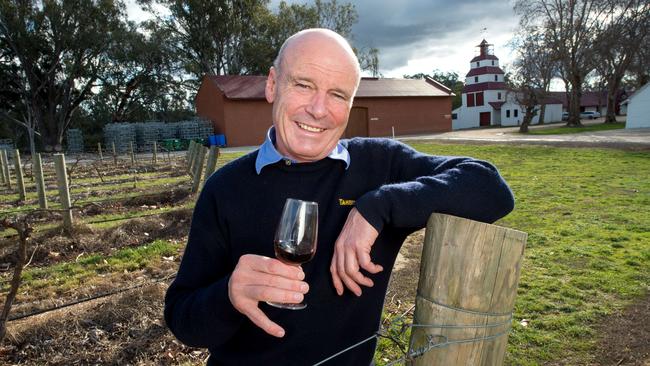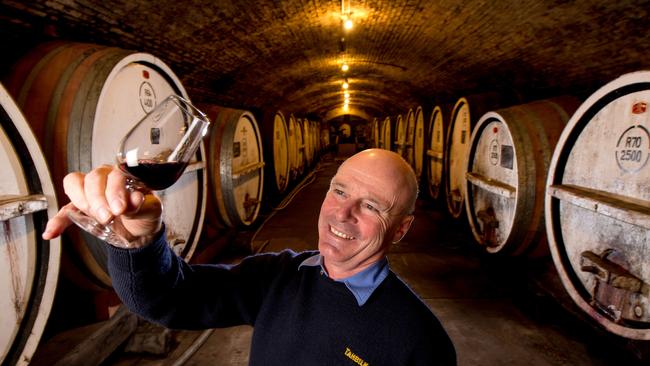Tahbilk doesn’t see China lifting its crippling wine tariffs any time soon despite easing tensions
Central Victorian winery Tahbilk once sold almost a quarter of its wine to China, but crippling tariffs have left it hunting markets in Korea, Japan and India.

Tahbilk owner Alister Purbrick has welcomed the thawing of relations between Beijing and Canberra but doesn’t believe tariffs placed on Australian wine will lift anytime soon, with the wine industry at the “back of the queue” to other export industries including lobsters, cattle and coal.
Since being locked out of China when 200 per cent-plus tariffs were imposed last year, Mr Purbrick has been looking for new markets for the wines made at winery in central Victoria.
At its peak, Tahbilk was sending almost one quarter of its production to China and has in the last financial year saw a $1.25m reduction in profits from the impact of the Chinese restrictions. It incurred another $250,000 in writedowns of red wine, mostly shiraz, that was to be sold there.
“Around 23 per cent of the Tahbilk brand was going to China, so that hurts, and of course there’s no magic wand recapturing that, and we have just got to re-pivot as we have been doing and looking to explore other markets and continue to build our direct-to-customer business,” Mr Purbrick said in an interview.
Like many winemakers, he has paid attention to the improving relations between Canberra and Beijing, but believes it will be some time before his wine – or that of other producers – is once again the wine of choice in China.
“No, we are planning that we have got at least a five year, if not longer, holiday in China and the reality is that even with the best will in the world, and even with the Labor government thawing relations, for as long as China has aspirations around Taiwan I don’t think anything is going to change as far as the wine industry is concerned,” he said. “There might be other products like lobster and so on, that their bans might be overturned, and they might return, but given that the Chinese consumer has such a huge range of wines from other countries to choose from, I think we are right at the back of the queue as an industry, sadly, to get any relief.”

Mr Purbrick said Tahbilk was instead “chasing export sales rabbits down every hole” it could find, and was pursuing distributors in South Korea, Japan and Singapore. That wa, however,s a short to medium term play as it formed relationships in those countries.
India was also a possible future big market. “I think the potential of India is a good one. It’s really good that Australia was included in that first trade agreement and now going through a renegotiation of a trade agreement to broaden it out to other industries and our industry is working very diligently with the government to see whether we can get a decrease on that minimum export price that has been set … so that would open up to some of the lower priced wines,” Mr Purbrick said.
“It will also be good to replace some of those lost China sales.”
Tahbilk posted a slight increase in sales in the 12 months to June 30 of $44.7m, an increase from $42.2m a year earlier, while profit fell to $1.3m from $1.7m.
Mr Purbrick said revenue was bolstered in 2022 by its wine club membership platform where wines are sold directly to drinkers, with Melbourne sales especially strong through lockdowns.
Currently, Tahbilk generates around 50 per cent of its sales through its popular wine club, up from one third of total sales before the loss of the China market.
Almost half of Tahbilk’s vineyards were covered in floodwaters this year, and while they have recovered as the water receded, Mr Purbrick said his total vineyard harvest could be down by as much as 75 per cent this year.
“It will all be up to Mother Nature and if she decides not to have too much rain,” he added.






To join the conversation, please log in. Don't have an account? Register
Join the conversation, you are commenting as Logout